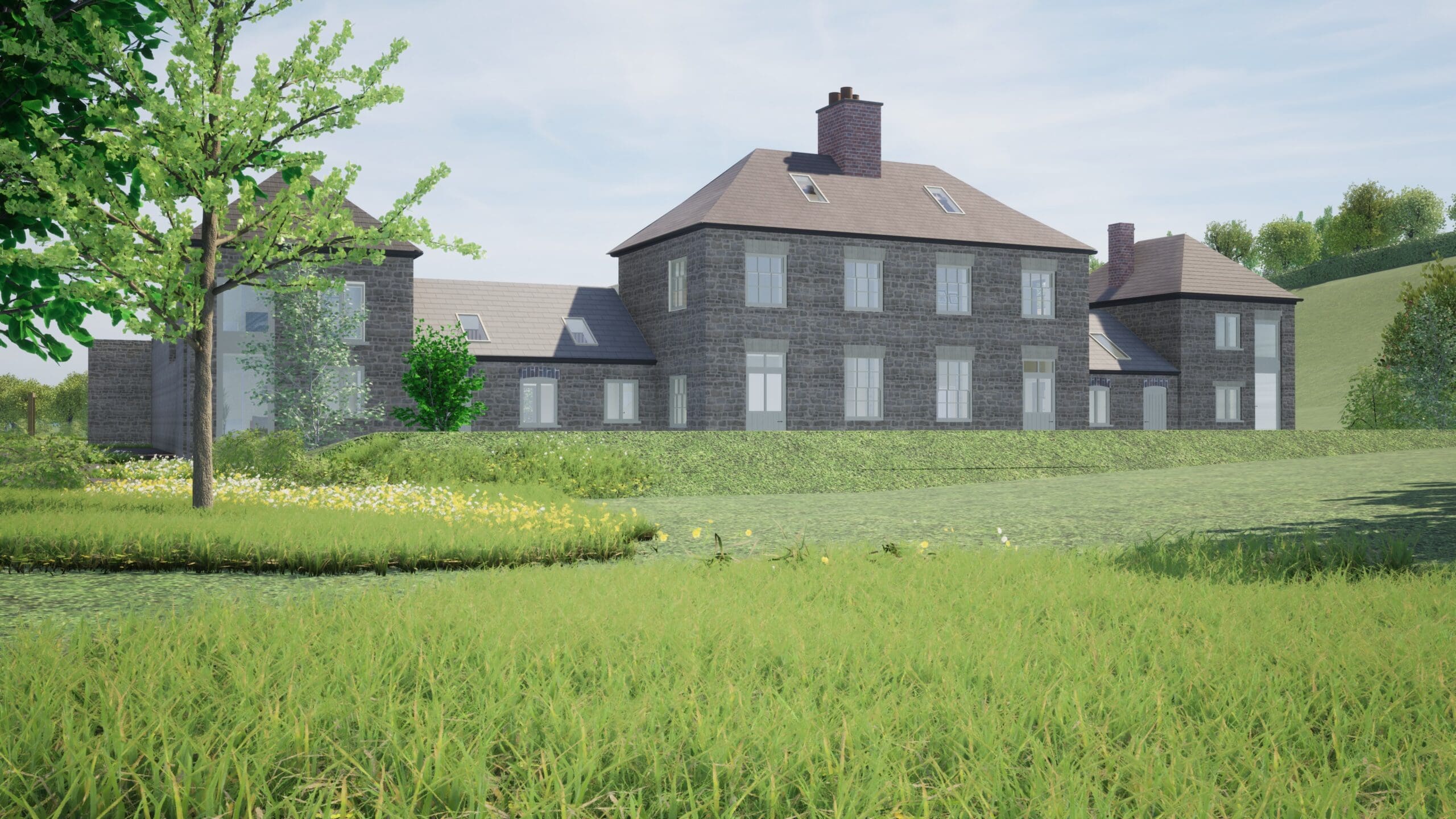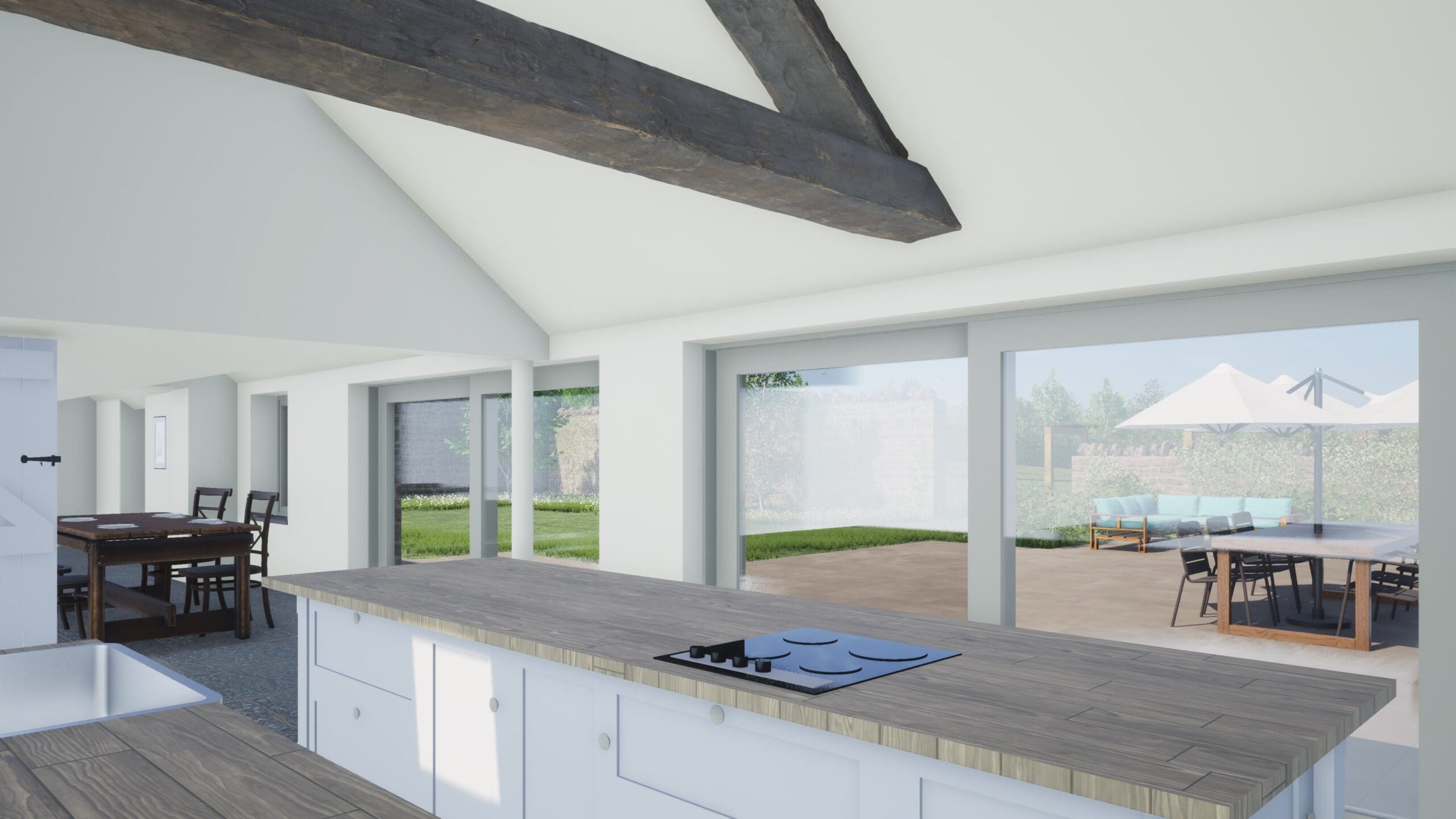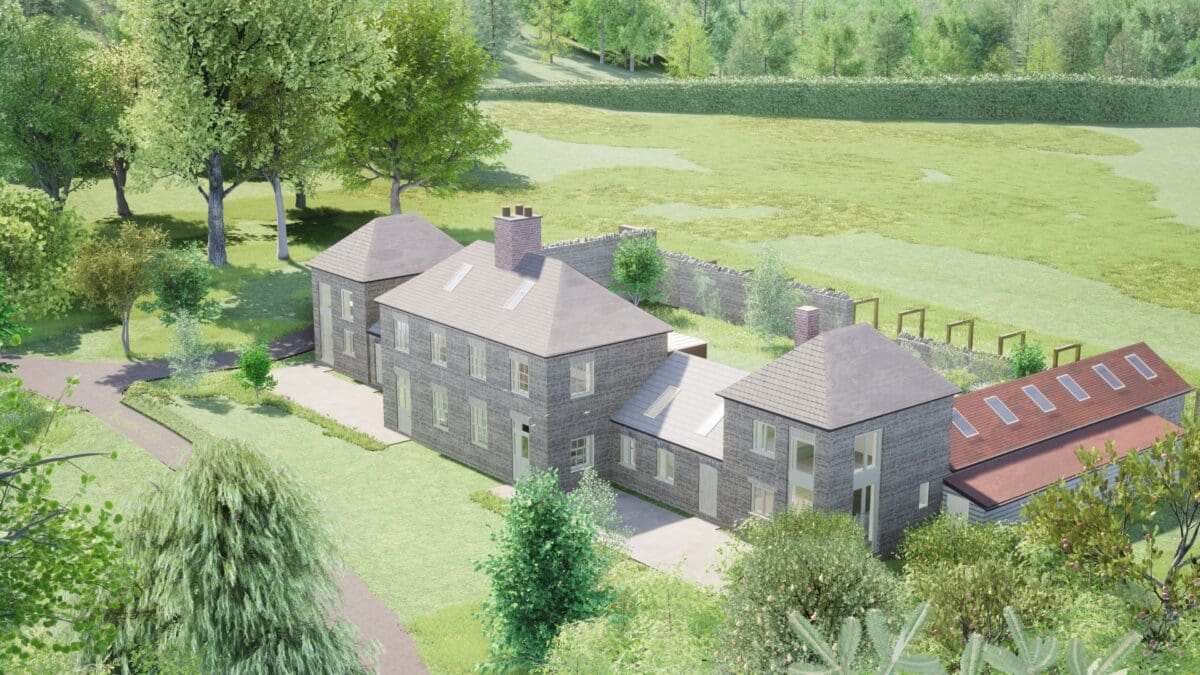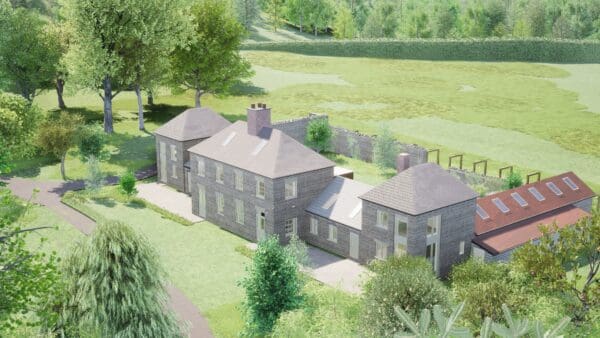We have been working with a couple who live in a former estate building with a palatial frontage. It originally housed hunting hounds and was later converted to two workers’ cottages. The couple invited us to work with them to develop a plan for a single, coherent dwelling that achieves modern standards of insulation and comfort. As always, we suggested a 3D visualisation during Stage One of our process. They were initially reluctant, but ultimately decided it would add value. In this short piece, they explain their initial reluctance, give their reason for deciding to go ahead with the visualisation and share their experiences on the value it brought.
When Alex first suggested a 3D visualisation, we were unsure whether it would be necessary. We felt we understood the 2D plans and could visualise the spaces and the flow through the house without needing to see it in 3D.

We were also concerned a 3D visualisation might even detract from the image we had in our heads. We’d looked at other 3D visualisations Communion had done and felt they looked too clinical, too much like new builds, even when they were heritage homes like ours. We’re the sort of people who think the book is better than the movie and we felt our unique 1800s home couldn’t be represented in digital form.
In the end, we decided to go ahead because there were two different options for the roofline of our project, one much more modern than the other, and we were unsure which one would be right for us. We thought seeing the options in 3D would help us make the decision.
We’re so glad we did! As we said to Alex after he sent us the link to our 3D visualisation: ‘Wow! We don’t know how to respond to this in measure of its worth. Absolutely phenomenal. We can’t believe how exciting it is to see our house imagined in this way.’
Our fears over the clinical nature of the digital form were misplaced. When it’s your own home, it’s familiar. Your brain can see through the perfect digital representation to the physical reality and its glorious imperfections. This sense was enhanced by the uniquely personal details in the animation – seeing our piano in the sitting room and our maps on the wall brought it to life in an extraordinary way.

Not only that, it also made us question our accepted beliefs about the way we like to live. Alex had designed us a sleek, modern kitchen, with everything carefully hidden. We’d instinctively rebelled against this in the plans – we thought we liked the comfort of clutter around us. Being able to see the beautiful clean lines of the build uninterrupted by the stuff of day-to-day life made us think there might be a different way to live. On programmes such as Grand Designs, the people often say the building has changed the way they live. Even from the 3D visualisation we can now see how this could happen.
Above all, the 3D visualisation provoked a powerful emotional reaction. Our project is a self-build and our clear intention was always that the work should fit around our everyday life and not take it over. Yet when my wife saw the 3D visualisation for the first time, she summed up our feelings perfectly when said: ‘Well, you’d better get a move on with building it now, husband’.
THANK YOU to Communion for convincing us to go for this.



